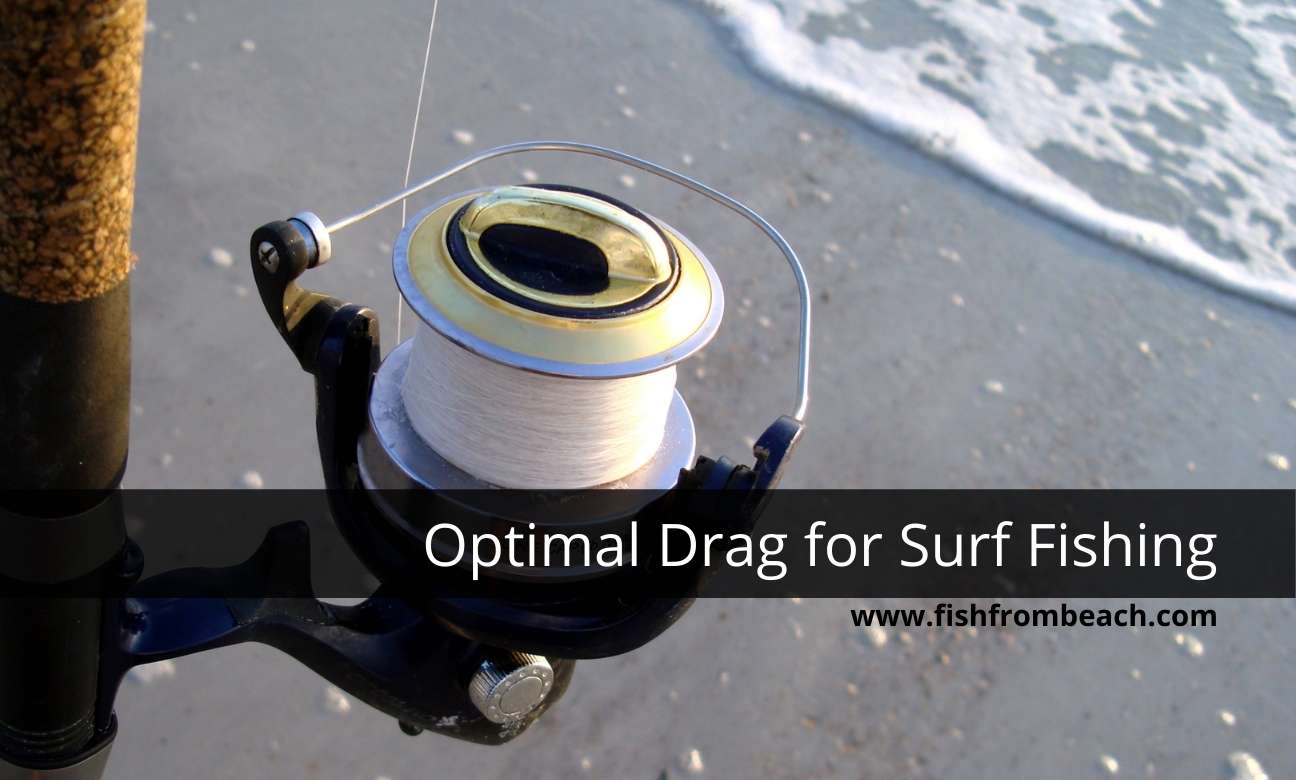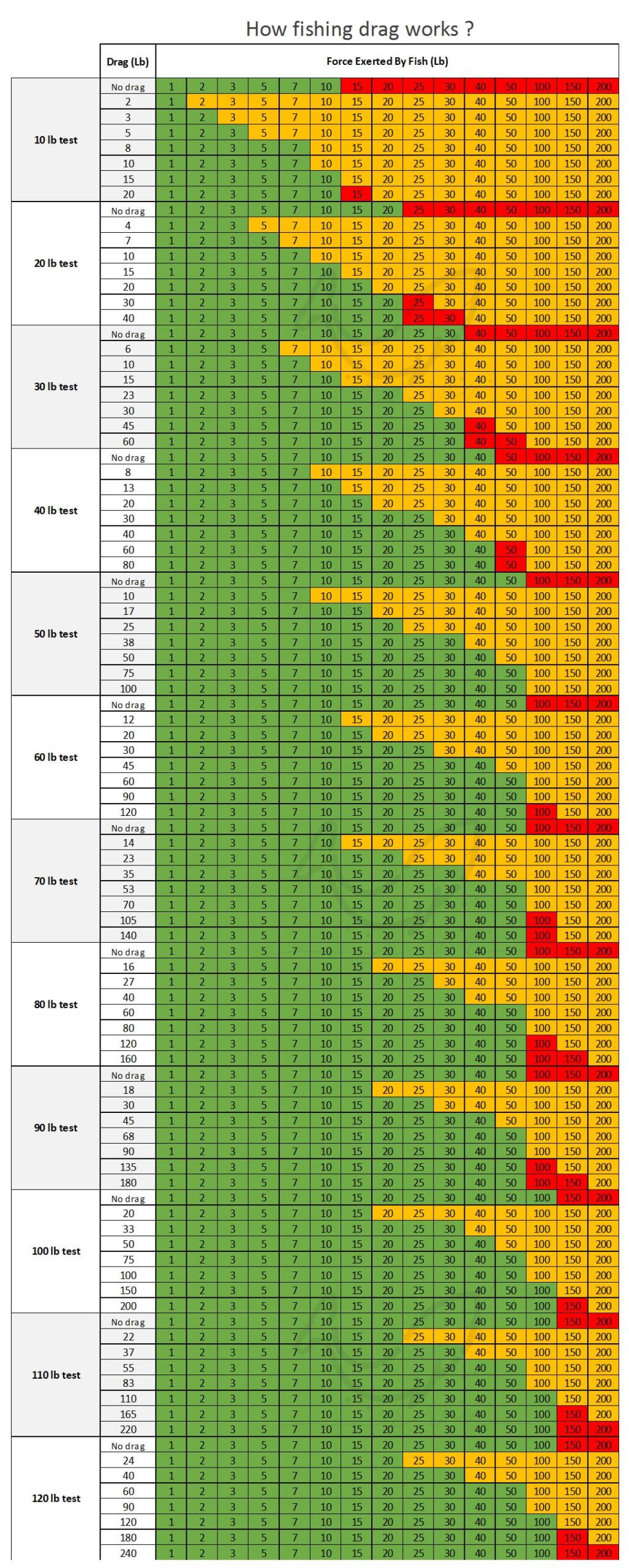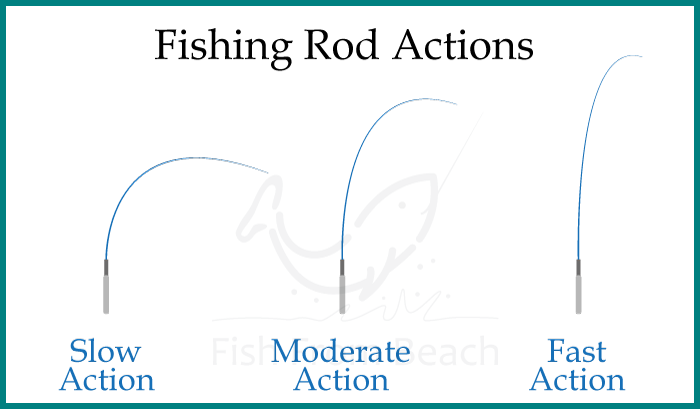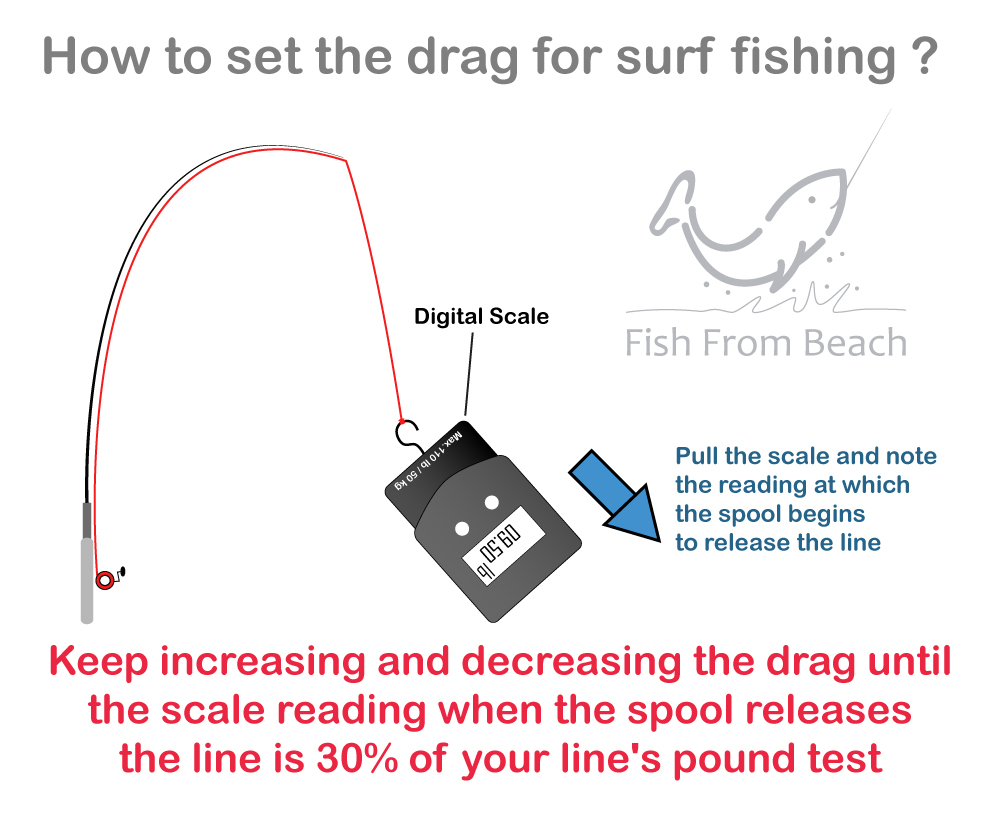
I believe that drag is important for surf fishing more than any other type of fishing.
Think of it this way :
As an angler, controlling the distance between you and your catch is so important because it is the only way to tire the fish and keep the fight in your favor during all rounds.
However, when it comes to surf fishing, things get more critical.
Standing on the shore and fighting fish at 70-100 yards requires more vigor and severity, and letting the fish go too far with your line will seriously affect your chances of landing the catches.
That’s where drag comes into play.
The drag is what permits you to control the distance between you and your catches, and neglecting it when surf fishing will not only make it hard for you to catch fish, but it can also cost you a lot of gear and equipment.
So what does drag mean is fishing ? How much drag is needed for surf fishing ? And what are the factors that dictate the right drag to use from shore ?
As a general rule, the optimal drag for surf fishing is 30% of your line breaking strength. However, you can adjust this rule depending on the targeted species, the beach structure, and the type of line and rod you are using.
In this article, we will discuss in more detail the question of drag setting from a surfcasting perspective, and all the variables that you should consider when setting your drag. So keep reading 🙂
What does drag mean in fishing ?
In simple words, the drag is a simple friction system built inside most fishing reels. The role of this system is to allow you dictate at which weight (typically in pounds) should the spool spin and therefore release the line.
So, for example, if you set the drag to 10 pounds, the reel will only release the line if something heavier than 10 pounds pulls off the line. Otherwise, the spool will not rotate and the line will remain in the reel.
In more technical terms, drag is a mechanism made up of several friction discs compressed together, so when something pulls off the line, these discs start spinning in opposite directions and the spool starts rotating backward to release the line.
Now the more these discs are compressed together (more friction), the harder it will be to pull off the line. That’s what we mean by a tight drag (we also say a high or a heavy drag).
When the drag is tight, the line comes off the spool slowly and you have to exert a higher force to pull it off.
On the flip side, when the friction discs are more separated from each other, the line comes off much more easily, and this is what we mean by a loose drag (we also say a low or light drag).
Now all that happens under the cap of your reel, and you don’t need to know exactly how the drag works. All you need to know is how to set it up, and to do so, you simply use the knob on the top of your reel.
Generally, we rotate the knob clockwise to compress the discs and therefore tighten the drag, and in the opposite direction to separate the discs and loosen the drag.
So, as you may have guessed, drag is a line protection system.
We tighten the drag to limit the release of line and therefore avoid losing it all, and we lower the drag so when a heavy fish takes the bait, the reel starts releasing the line and protects it from breaking.
In the next 2 paragraphs, we will see in more detail what happens when we use a too heavy or a too light drag.
What happens if you use a too heavy drag ?
Well obviously, after all that we said above, it’s clear that a too heavy drag puts your line in danger and may cause it to break.
In other words, if you set your drag too high and a heavy fish takes the bait, then the reel will not spin, and as a result, the line will be subjected to massive stress that can cut it off.
However, I must emphasize that this is not the main problem behind a too high drag. Why ? Because in the real world, the line will rarely break due to an overly tight drag.
It will break just in case the drag is set to a value that exceeds the actual pound test of your line, and for this to happen, you need to set the drag too high, use a light line, and also a heavy fish (weighting between your pound test and your drag setting) to take the bait.
In this scenario, the line will receive stress that exceeds its capacity before the reel starts to release the line. So yes, the line will break here, but in any other scenario, it will remain just fine.
But the odds for this to happen are still low… right ?

As you can see in the table above, your line will only break (red squares) if your drag is set to a value that exceeds the actual pound test of your line. Otherwise, it will stay on the spool (green) or follow the fish as it runs (yellow).
It is very important to mention that in the previous paragraphs, I assumed that your rod is powerful and has decent lifting power and that you meet the recommended line size stated on the rod. Otherwise, and in case things get really heavy, the rod might break before the line, which is a more unfortunate result. I invite you to read the article where we discussed everything you need to know about surf rods power.
Ok, I understand. So what is the real problem behind a too high drag ?
Setting the drag to a high value will give you more control over fish and will allow you to lose less line during the battles, but it will also cause more fatigue to you, and that’s the real challenge when using heavy drags.
When the reel does not release the line easily, much of the pressure created by hooked fish will be transmitted directly to your rod, and inevitably, to you too.
This is not a source of concern when targeting small or medium-sized fish, but when aiming for sharks, albacore tuna, or sizeable redfish or bluefish, you will struggle big time during the fights and you may often find yourself knee-deep in the water.
And of course, no need to mention the soreness it can cause and all the cramps the day after 🙁
On top of that, remember that your rod has a limited lifting capacity and only supports a certain amount of stress. Exceeding that threshold will cause your pole to break. No fisherman in the world wants to experience that.
Lowering the drag will let heavy fish take some of your line and thus reduce the stress you receive from your end. This will make you more comfortable on the shoreline and cause less fatigue to you, and will also prevent your rod from breaking. You can then concentrate on tiring the fish and dragging it slowly to shore without investing so much energy.
So what is the maximum drag for surf fishing ? How much is too much ?
Based on my own experience and that of my fishing friends, and also what other fishermen recommend on the internet, I believe that 20-25 lbs is the maximum drag for surf fishing.
Anything more will be like a nightmare for your back, shoulders, and arms. We will come back to this later in this article. Now let’s talk about the downsides of light drags.
What happens if you use a too light drag ?
A light drag will cause the reel to release the line easily when subjected to pressure. This is okay when fishing for light species like pompano, surfperch, or bream because you will be able to regain the lost line by simply reeling in.
However, when targeting sizeable fish, a loose drag will cost you a large amount of line that you will not be able to regain easily.
This is the last thing you want to do when targeting heavy fish because you will give them more control and leverage over you and drastically hurt your chances of landing them.
When surf fishing, you want to keep the distance between you and your catches short and create that tight constraint that prevents them from moving freely and running with your line. This is the only way to tire them off and make them easy to drag to shore.
Otherwise, the hooked fish will feel free to navigate where they want without consuming too much energy. This will make the fights so long, and therefore, so tiring for you, and guess what, you may never be able to land the fish.
Not only that but letting the fish go in all directions can cause you to lose your terminal tackle if the fish runs to sharp structures in search of shelter.
The worst scenario of using too loose drags is being completely spooled out and losing the entire line. This seems uncommon and improbable, but if your drag is so low and a heavy monster takes the bait… It will happen.
Of course, no fisherman wants to lose his entire line during a fishing day, but it’s also bad to leave the whole line in the surf zone as much fish can get tangled to death.
How much drag is needed when surf fishing ?
As you can see, we are in a trade-off situation here. We must tighten the drag to enjoy more control over fish and not let them take the entire line, and at the same time, we must loosen the drag so that we feel comfortable on the shoreline and the rod doesn’t become too heavy to maneuver during combat.
We need, therefore, to set our drag to a sweet spot where both purposes are met. Control over fish, and comfort 😉
The rule of thumb for drag setting is 30% (or 1/3) of the line breaking strength.
So for example, if you are using a 15 lb test line, then the optimal drag for your reel should be around 5 pounds.
However, this rule of 30% can be adjusted (+/- 10%) depending on your experience, the type of rod and line you are using, the fish species you are targeting, and the beach structure where you fish.
In the next paragraphs, we will discuss in more depth all the factors that dictate the right drag to use from shore. So keep reading 😉
The drag should depend on the targeted species
The first factor that dictates the optimal drag for surf fishing is the species you are targeting.
When you are familiar with the place where you fish and you know that most species in your area are generally under 10 pounds, then the drag setting should not be a source of concern, and you can use any drag (under your pound test of course :D) and still be fine.
Tighten the drag and you will give no chance to fish. Or, you can loosen it to spend more time at battles and have more fun playing fish.
The choice is yours. Pick whatever is more fun to you.
If you choose to tighten the drag (say 40 – 50 % of your pound test), then your rod and line will not risk anything as most fish are under the 10 lb mark. This will allow you to land most hooked fish comfortably without even releasing the line.
On the flip side, If you choose to loosen the drag, you risk losing some line during the first moments of the battles, but you should be okay turning those small and medium-sized fish easily.
The drag setting should, however, be a source of concern when you know that heavy predators are holding within your casting range.
If it’s the case, then you should keep your drag at the optimal setting (30%) or even tighten it a little bit (say 35-40%).
Sizeable fish will put massive pressure on your line as soon as they take the bait, and you reel should be able to resist that initial pressure and prevent releasing too much line during the first moments of the combat.
As a general rule, the first moments after bites are the ones that present most risks. If you manage to survive those moments, then the odds of landing the fish will improve. So make sure your drag setting is able to deal with those early rounds of the fight.
Having said all of that, you have to keep in mind that you can not predict the surf.
Once your bait is in the water, you are inviting all fish of all sizes to take your offering.
Therefore, you should always keep your drag tight, or at least at the optimal rate (around 30%), when surf fishing.
Yes, the surf zone you are fishing may not have produced large catches in the past, but you should not take that as a rule. You have to keep the drag right so you can deal with those happy exceptions that occur from time to time 😉
The drag should depend on the type of line
Monofilament and fluorocarbon allow using more drag than the 30% rule because they are able to stretch when exposed to pressure, and therefore, reduce the stress exerted on the rod.
This lets you to tighter the drag and limit the release of line without tiring your arms and shoulders, nor risking to break your rod.
Braid, on the other hand, is very strong and does not stretch, so when pressure is exerted on the line, nothing will be there to absorb the stress, and all the pressure will be put on the line, the rod, and as a result, on you.
This can be so tiring and challenging because all spikes will be on you. The rod and line will do nothing but transmit this pressure to you.
This is why it is recommended to set less drag when using braided lines.
You want your reel to release the line as soon as you start to feel uncomfortable to hold the rod.
So to give some figures, I will say that 25-30 % is the optimal drag when using braid, and 30-35% when using mono.
Read our article where we discussed the pros and cons of monofilament and braid from a surf fishing perspective.
The darg should depend on the rod’s action
The stiffness of your rod is another factor to consider when setting the drag for beach fishing.
Generally speaking, slow action rods allow using more drag than the 30% rule.
Let me explain…
As slow action rods bend completely when subjected to pressure, they are therefore very effective at absorbing the shocks and reducing the stress on the line and the rod.
This allows us to use more drag and limit the release of line without compromising comfort and the rod’s safety.
In other words, when using a slow action rod, you know that even if something really big takes the bait and creates massive pressure on the line, the flexible rod will be there to cushion the stress, and it won’t put it all on you.
In this situation, you are allowed to tighten the drag and limit the release of line because pressure spikes won’t be as tiring and risky as when using stiff rods.
Stiff (fast action) rods, on the other hand, are great for surf fishing because they offer better bite detection and effective hooksets.
However, the firm tip of fast rods does not cushion pressure spikes effectively and put all the stress on the line, the rod, and consequently, on you.
So when using fast rods, you need to set less drag (25-30%) so that the spool releases the line as soon as something heavy takes the bait. This is the only way to reduce fatigue and keep the rod in a safe position.

Read this article about the best rod action for surfcasting.
The drag should depend on your experience
Your experience as a surf angler will make you less dependent on the drag setting.
In other words, the more experience you have, the less you will think about drag before your surf fishing trips.
Let me elaborate 🙂
First, experience will give you that feeling whether your drag is good or not, just by pulling the line and watching how it leaves the spool.
Second, experience will give you the necessary skills to lose less line and optimize drag during the battles, even if your setting was completely wrong before the cast.
To summarize these skills in simple words, I will say that you need to know :
- How and when to retrieve the line during the fight
- When to palm the spool
- How to pull or lean the rod during the different phases of the fight
- When to tighten the drag and when to loosen it letting the hooked fish run
- When and how to walk along the shoreline during the fight and when to stand still in one particular spot
Put another way, you need to learn the things that tire the fish while losing the minimum of line.
All these skills can be taught (I will give some tips later), but they are only mastered after years and years of trial and error.
The only way to truly master these skills is to pack your gear and go out to the field and make mistakes.
Mistakes are the best teacher here…
Once you acquire some experience and accumulate a lot of won/lost battles, you will develop that feel of the right drag to use and become less concerned about it.
With that said, you should not be worried if you lack experience and you are just starting out. Stick to the rule of 30% and you will be fine to catch a lot of fish from shore.
The drag should depend on the structures you are fishing
One last factor to consider when setting the drag for surf fishing is the underwater terrain.
Open waters with clear sandy bottoms allow the use of low drags as there is no great risk in letting hooked fish run in whichever direction they want.
Conversely, when fishing rough grounds filled with weed, rock piles, and abrasive clusters, you need to keep the drag tight (30-40%) so you don’t let fish run to the shelter where they can snap or tangle your line.
Put another way, when fishing snaggy shores, your reel should release less line so you can pull hooked fish out of structured areas and drag them to open waters where there is less risk to cut your line or get snagged at something.
Read more tips to keep in mind when fishing rough grounds
How to set the drag for surf fishing ?
Experienced fishermen can adjust their drags without any tools. A simple pull of the line is enough to tell them if they need to tighten or loosen the drag. As said before, this feeling can only be acquired after years and years of trial and error.
For beginners, a digital scale is needed to set the drag.
The first thing to do is to decide the breaking strength of your line.
I invite you to read our complete guide where we discussed all the factors to consider when deciding your line’s weight.
Once you know the pound test of your line, divide that by 3 or multiply by 30% to obtain your optimal drag setting.
So for example, if your line is 30 lb test, then the right drag to use is 9-10 pounds.
You can then consider all the factors and variables that we discussed in this article and tweak that number to whatever suits you best.
After you do all the math, pick a digital scale, and use a solid knot to tie the line to the scale’s hook. Now slowly pull off the scale with your hands and be ready to take the reading of the weight that causes the reel to release the line.
Tighten the drag if the reading is less than your calculated drag, and loosen it if the reading is above it.
You have to repeat these steps until the scale shows the exact number of your calculated drag setting.
I know I’m terrible at explaining certain things, so I decided to make this simple illustration for you 😀

Now, to do all this, I recommend that another person holds the rod and adjusts the drag while you read the scale. It can be done with one person, but it is much easier with two.
NB : If you don’t have a digital scale, here* is a good and recommended one :
What if I need more than 20 pounds of drag ?
We said earlier in this post that 20-25 pounds is the maximum drag to have when surf fishing, and that going beyond that will be so tiring for your back, shoulders, and arms.
So what should you do if you need more than that ? What if, based on the 30% rule, your line requires more than 20-25 pounds of drag.
This is an excellent question because yes, when surf fishing, we may need to use a line of more than 60 lb test. So what to do in this case ?
Well, after thinking about it, my simple answer is that if you use such a strong line, it means that you are looking for heavy fish like sharks, tuna, or tarpon. And if you target these species, it means that you are a skillful fisherman with a few years of experience. So for me, with this experience, you should be able to turn big fish with only 20 pounds of drag. In other words, after years of trial and error, you should have developed the skills to fight big fish with a light drag and without losing so much line.
So the drag should be less critical for you in this case, and 20-25 lbs should be enough to turn the heaviest monsters in the surf zone.
If, on the other hand, you are just starting out, I don’t recommend going for heavy fish anyway. Why ? Because it will be difficult for you in all directions, not just with the drag setting.
In your first years, I recommend targeting small to medium-sized fish only, like pompano, surfperch, stripers, puppy drums, and bluefish…
These species will teach you how to fight properly and how to better control the distance between you and your catches.
Yes, I know that you can not predict the surf and once your bait is in the water, any fish can get hooked. But you can opt for some choices to keep the large fish away :
- Use small bait (2-5 inches)
- Keep your hooks small (Not more than 6/0)
- Avoid casting too far
- Avoid the rip channels that offshore fish use to approach the shore and look for food
- Use lures instead of smelly natural baits
- Avoid areas known by shark fishing
There are also a few tips to remember if you want to limit the release of line without upsizing your drag :
- Always keep the rod in your hands if your drag is under the recommended rate
- During pressure spikes, palm the spool to create extra frictions and limit the release of line
- Similarly, when you feel the fish is about to perform a jump, lean the rod’s tip forward in order to cushion the shock and lose less line
Can you adjust the drag mid-battle ?
Generally speaking, there is no need to modify the drag mid-battle when targeting small to medium-sized fish. For such species, set your drag to 30% of the line strength and you should be good to take all the rounds of the fight without touching the cap of your reel.
However, when targeting heavy fish, you will need to keep tweaking that drag setting until you land the fish to shore. Why ? Because large fish will take a large amount of your line, and as a general rule, the lower the diameter of your spool, the slower the line comes out, and therefore, the tighter the drag.
Let me explain…
Let’s say your drag setting when the spool was filled with line was 3 pounds, and after a heavy redfish hit your bait, you lost half of the line you had in the spool. Do you think you still have the same drag as before the cast ? Of course not. In fact, losing half of the spool will double your drag setting. So in this scenario, your new drag is 6 pounds, which represents 60% of your line strength. Not the optimal drag, right ?
When targeting heavy fish, you will often fall into this situation and therefore you should keep lowering your drag as fish take more of your line, and vice versa.
The behavior of the hooked fish will also dictate whether you should tighten or loosen the drag. Generally speaking, when the fish is in resistance mode, you want to loosen the drag and let it consume more energy. Once you feel the fish has settled down and is performing fewer jumps and runs, tighten the drag and try to gain as much line as possible.
Keep repeating the same process until you completely drag the fish to shore.
Now there is something to remember here, is that the closer you are to shore, the lower should be your drag. Why ? Because fish will perform one or two last jumps when they feel so close to land. So you want a low drag at that moment so that fish don’t rip the hook off their mouth as they move against the drag.
Also, you need to tighten the drag when hooked fish start moving towards cover and loosen it as they enter open waters. Never let fish run to abrasive objects where they can cut your line.
Again, these skills can be taught, but they are only mastered in the field. So give yourself some time to get familiar with these tactics before going after large fish. In other words, there is no need to worry about any of that when you are just starting out and only targeting small and medium-sized fish.
These tips are intended for intensive fishing and targeting large monsters capable of stealing a large amount of line before they give in to you.
Final word
The right drag for surf fishing depends on many variables and factors. The line and rod you use, the species you target, the mid-battles situations, the beach structures…etc.
All these factors make setting the drag look like an overwhelming task. However, sticking to the 30% rule is all you need when you lack experience and skills.
With experience and many years of trial and error, you will develop that feeling of what suits you best and what drag to use for your fishing conditions and objectives.
As I mentioned in this article, the only situation where fish can break your line because of an improperly set drag is when you use more drag than your actual line strength.
So that’s the main thing to avoid. Always keep your drag lower than your pound test.
If you want to use a heavier drag because you want to target sizeable fish, then you must upgrade your pound test too.
Also, keep in mind that it is better to have a too low drag than a too high drag.
You can always tighten the drag after hooking a fish, but you won’t always have the chance and time to loosen it when something really big takes the bait.
Some recommended surf fishing reels(*)
Note (*): If you make a purchase through links from this website, we may get a small share of the sale from Amazon or other similar affiliate programs.
Surf Fishing Survey
Help us provide you with better content by answering simple questions about your surf fishing experience and knowledge.
We will put the collected responses together and turn them into valuable information that will help you catch more fish from shore 😉
Note: No personal information will be collected with your answer.


